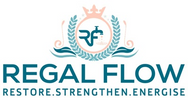
UV Purification: How Light Disinfects Your Countertop Water
Ever imagined your water getting a suntan to kill germs? UV purification does just that, using UV-C light to zap bacteria safely and quickly. Curious about Filtration Performance? Keep reading to discover how countertop UV systems eliminate 99.9% of microbes—turning tap water into crystal-clear refreshment without any chemicals!
Understanding UV Purification (UV Purification Basics)
Let’s face it—no one wants to drink dodgy water. Whether you’re topping up your reusable bottle or making your morning brew, clean water is essential. That’s where UV purification steps in, quietly doing the job without leaving a chemical aftertaste. It uses ultraviolet light—specifically UV-C—to destroy germs and keep your drinking water fresh. This method is fast, reliable and doesn’t mess with the taste. No chlorine, no faff—just safe, clear water straight from your countertop.
What is UV Light? (UV Light Definition)
UV light is a type of energy from the sun, invisible to our eyes but mighty when it comes to disinfection. It’s split into three types: UV-A, UV-B and UV-C. The superhero of the trio? UV-C. UV-C light has shorter wavelengths and packs a punch. It’s strong enough to knock out the nasties hiding in your tap water—without a drop of bleach in sight.
UV-C Light and Disinfection (UV-C Disinfection)
Let’s break it down: UV-C light, especially at 254 nanometres, scrambles the DNA of bacteria and viruses. That means they can’t reproduce or make you ill. It’s been tested against the likes of E. coli and Legionella—common troublemakers in UK water supplies. Best of all? No chemicals involved, just pure science and a little bit of clever tech.
Benefits of UV Purification for Countertop Water (UV Purification Benefits)
So, why are more people popping a UV purifier on the counter? Because it works. And it’s simple. You get safe, clean water at the flick of a switch—no boiling, no tablets, no bottled waste. Let’s dig into why this method is making waves in British homes.
Chemical-Free Process (Chemical-Free Water Treatment)
Say goodbye to chlorine smells and mystery additives. UV purification doesn’t add anything weird to your water. It kills the bad stuff and leaves the good stuff alone. That means your tea still tastes like tea—not like a swimming pool. It’s a natural way to treat water without turning your kitchen into a chemistry lab.
No Residual Chemicals (Residual Chemicals)
Traditional disinfection methods often leave behind chemical residues. That’s not the case with UV. There’s nothing added—and nothing left over. You get water as it should be: clear, clean, and completely safe. It’s peace of mind in a glass.
Types of UV Water Purifiers for Countertops (Countertop UV Purifiers)
There’s no one-size-fits-all when it comes to UV purifiers. Depending on your space, needs and tech preferences, there’s something for everyone. Some sit neatly next to your kettle, others fit snugly under the sink. But they all have one goal—germ-free water at your fingertips.
UV Lamps vs. LED Systems (UV Lamp vs LED)
Traditional UV purifiers use UV lamps. These are tried-and-tested, but they need replacing every year or so. Newer models use UV-C LEDs. They’re energy-efficient, last longer, and tend to be smaller and sleeker—perfect for modern kitchens. Both types work well, but LED systems are gaining ground thanks to lower maintenance and a smaller environmental footprint.
Batch Systems (Batch UV Systems)
Not all purifiers run water continuously. Batch systems treat a specific amount of water at a time—ideal if you’re filling bottles or making a few cups of tea. They’re efficient, compact, and easy to maintain. Just fill, purify, and pour. Simple.
Choosing the Right UV Purifier (Selecting UV Purifier)
Ready to get started? Picking the right UV purifier isn’t complicated, but a few things are worth considering. Think about how much water your household uses daily. Do you prefer plug-and-play systems or something more discreet under the sink? And are you okay with swapping bulbs once a year, or do you want a low-maintenance LED model?
System Maintenance (UV System Maintenance)
UV systems don’t need much TLC, but they do need a little. For lamp-based units, swap the bulb once a year and give the quartz sleeve a clean every six months. This keeps the light working at full strength. LED systems need even less looking after. Either way, maintenance is minimal—and far less hassle than remembering to replace filter jugs or boiling kettles. UV purification is safe, smart, and easy to run. Once it’s in, you’ll wonder how you ever lived without it.
More Countertop Water Dispenser info we think you'll love
Well Water Woes? Find the Perfect Countertop Dispenser for Clean, Safe Water
Best Countertop Water Dispensers for Hard Water: Top Picks & Tips
How Reverse Osmosis Works in Countertop Water Dispensers
Activated Carbon Filtration: What It Removes and How It Works
Sediment Filtration: Protecting Your Countertop Water Dispenser
Understanding Filter Pore Size: What It Means for Your Countertop Water


Leave a comment